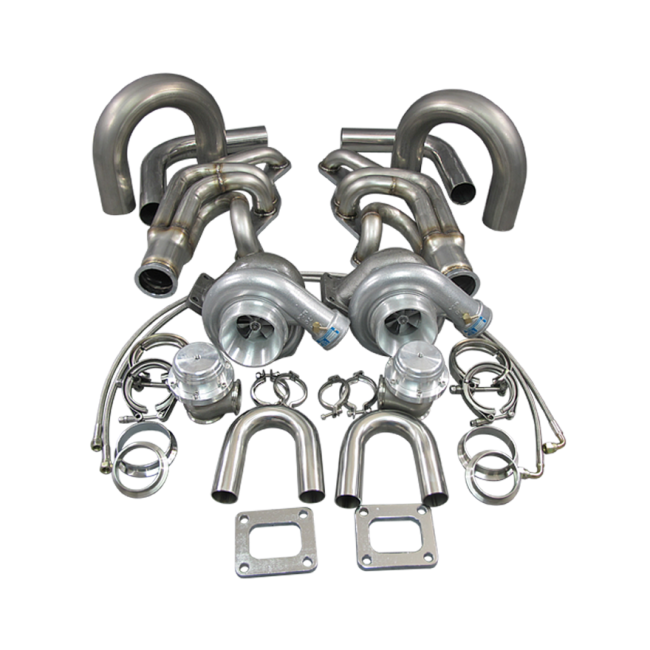Are you ready to unlock the true potential of your car’s performance? Building a twin turbo kit might just be the game-changer you’re looking for.
Imagine the thrill of increased horsepower, faster acceleration, and that undeniable engine roar that turns heads wherever you go. Whether you’re a seasoned car enthusiast or a curious newbie, the idea of boosting your car’s power can be incredibly exciting.
But before you dive in, it’s essential to understand the fundamentals. Crafting a custom twin turbo kit isn’t just about slapping on a couple of turbos and calling it a day. It requires careful planning, the right components, and a bit of technical know-how. This guide is here to help you navigate through the process with ease. From selecting the perfect turbos to understanding key installation tips, you’ll discover everything you need to know to build your very own twin turbo kit. Stay tuned, because your journey to a more powerful ride starts here.

Credit: redeyeracecars.com
How To Build A Custom Turbo Kit
Crafting a twin turbo kit starts with selecting compatible turbochargers. Ensure they fit your engine specifications. Connect the turbochargers with robust piping for efficient airflow. Install wastegates to control boost pressure. Finish with a durable intercooler to keep temperatures down.
Building a custom twin turbo kit can be an exciting journey. Turbo kits enhance your car’s performance by boosting engine power. With careful planning, you can create a custom setup that fits your specific needs. Let’s dive into the process.
Selecting the Right Turbochargers Choosing the right turbochargers is crucial. Different engines require different turbo sizes. Here’s what to consider: – Engine Size: Match turbo size to engine capacity for optimal performance. – Power Goals: Choose turbos based on desired horsepower increase.
– Space Availability: Ensure turbos fit in the engine bay without modifications. Designing the Exhaust Manifold The exhaust manifold directs exhaust gases to the turbos. Proper design boosts efficiency. Consider these factors: – Material Choice: Use durable materials like stainless steel for longevity.
– Flow Efficiency: Ensure smooth gas flow to reduce back pressure. – Custom Fit: Design manifold to fit engine layout perfectly. Planning the Intercooler Setup An intercooler cools the compressed air, improving performance. A few key points to note: – Size and Type: Choose an intercooler that fits your car’s space.
– Mounting Location: Ensure it gets good airflow for optimal cooling. – Pipe Routing: Plan efficient routes for airflow without restrictions. Building the Intake System The intake system supplies air to the engine. It needs careful planning for efficiency: – Filter Type: Select filters that offer high airflow and protection.
– Pipe Diameter: Ensure pipes are wide enough for smooth air passage. – Connection Points: Use secure connectors to prevent air leaks. Installing the Wastegate A wastegate manages turbo pressure. It prevents engine damage. Here’s what to keep in mind: – Type Selection: Choose between internal and external wastegates based on needs.
– Boost Control: Ensure precise control of turbo pressure levels. – Placement: Position wastegate for easy access and maintenance. Customizing the Fuel System Turbo engines require more fuel. Upgrade your fuel system for better performance: – Fuel Pump Upgrade: Install a pump that meets increased fuel demands.
– Injector Size: Use larger injectors for improved fuel delivery. – Fuel Lines: Ensure fuel lines can handle increased pressure. Tuning the ECU The ECU controls engine operations. It must be tuned for turbo efficiency: – Software Update: Use performance software for enhanced engine control.
– Sensor Calibration: Ensure sensors read accurately for optimal tuning. – Professional Assistance: Consider hiring a tuner for precise adjustments. Creating a custom twin turbo kit requires attention to detail. Each component must be chosen wisely for the best results.

Credit: www.cxracing.com
Conclusion
Building a twin turbo kit takes patience and precision. Start with quality components. Ensure every piece fits perfectly. Double-check connections for leaks. Test your setup in safe conditions. Monitor performance closely. Adjust as needed for optimal results. Remember, safety is key.
Enjoy the power boost responsibly. Share your experience with fellow enthusiasts. Keep learning and improving your skills. Building a turbo kit is a rewarding journey. Embrace the challenges. Celebrate your successes. Your dedication pays off in performance gains. Engage with the community.
Keep exploring and enhancing your automotive passion. Happy tuning!
